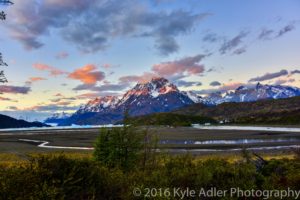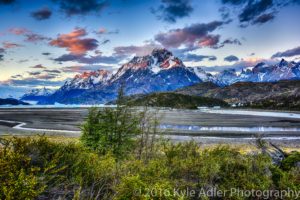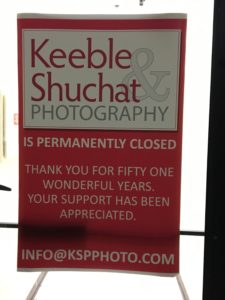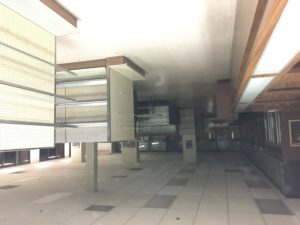In the fall of 2015, my wife and I traveled throughout Turkey on a 2.5-week journey that included adventures in Istanbul, Cappadocia, the Turquoise Coast, and Ephesus. We traveled with Overseas Adventure Travel (OAT) in the company of a local Turkish trip leader, and we had a wonderful, safe experience. In today’s post I share our experiences and some of my favorite images from this spectacular but troubled nation.
First, a few words about safety. Even when we traveled in September and October of 2015, there were concerns about the safety of travel in Turkey. We did not visit the far southeastern regions of Turkey due to the ongoing violence between various factions from ISIS, Kurdish separatist groups, and the Turkish government. There was a bombing with many casualties in Ankara while we were visiting a different part of Turkey. Since our trip, the situation has deteriorated as a result of an escalating crisis in and around the border with Syria, terrorist actions throughout the country, and the broad government crackdown in the wake of the attempted coup earlier this year. OAT, the company we traveled with, has since suspended all of their trips to Turkey. Tourism in Turkey is being devastated by the concerns of safety on the ground.
So why would anyone want to go to Turkey? The cultural, historic, and natural appeals of this destination are undeniable. It is a travel photographer’s paradise. And safety is a relative term. I’ve traveled in over 100 countries and many of them were considered “unsafe” when I visited, but my only two close encounters with real terrorism were in supposedly “safe” cities: a bombing in Tokyo and a mass shooting in Los Angeles. I felt safer in Turkey late last year than I do in many other parts of the world. That said, the situation on the ground has deteriorated since I visited, tours to Turkey are becoming hard to find, and only you can decide on your tolerance for risk. So perhaps wait for more order to return to Turkey before traveling there to make your own images, but in any case you can enjoy my images from this fascinating and gloriously beautiful part of the world.
Our adventure began in Istanbul, an ancient city situated at the border between Europe and Asia. Its place as a crossroads of history from Roman times through the Byzantine Era, the Ottoman Empire, and the modern Turkish republic is apparent as you stroll its winding streets and ply its crowded waterways. The are opportunities to make great images everywhere in the city.
 Istanbul’s Hagia Sophia, the foremost Byzantine church, is nearly 1500 years old. When shooting grand architectural sites from up-close, it’s a challenge to try to avoid distortion due to perspective and the necessity of using a wide-angle lens. Here I kept the horizon level with the ground to avoid excessive distortion. Buy this photo
Istanbul’s Hagia Sophia, the foremost Byzantine church, is nearly 1500 years old. When shooting grand architectural sites from up-close, it’s a challenge to try to avoid distortion due to perspective and the necessity of using a wide-angle lens. Here I kept the horizon level with the ground to avoid excessive distortion. Buy this photo
 The best baklava in Istanbul? Perhaps. I certainly didn’t taste any better baklava in the city, and believe me, I tried a lot of baklava. To make this portrait, I asked our trip leader to introduce me to the baker, who was happy to pose with his wares. This was shot with natural light and just a touch of fill flash. Buy this photo
The best baklava in Istanbul? Perhaps. I certainly didn’t taste any better baklava in the city, and believe me, I tried a lot of baklava. To make this portrait, I asked our trip leader to introduce me to the baker, who was happy to pose with his wares. This was shot with natural light and just a touch of fill flash. Buy this photo
 View of the Galata Tower from across the Bosphorous. Buy this photo
View of the Galata Tower from across the Bosphorous. Buy this photo
After Istanbul, we traveled to the central region of Cappadocia, famous for its “fairy chimneys,” natural spires formed by the erosion of soft tufa rock. This region is a veritable dream for travel photographers!
 Upon arriving in Cappadocia, we were thrilled to learn our hotel room was inside an ancient cave dwelling. (Not to worry, it had been recently remodeled.) When shooting interiors, it’s usually best to use a fast wide-angle lens and to compose the image carefully so as to gain the viewing perspective you want. Buy this photo
Upon arriving in Cappadocia, we were thrilled to learn our hotel room was inside an ancient cave dwelling. (Not to worry, it had been recently remodeled.) When shooting interiors, it’s usually best to use a fast wide-angle lens and to compose the image carefully so as to gain the viewing perspective you want. Buy this photo
 The Goreme Open Air Museum comprises dozens of ancient Byzantine churches carved out of the tufa rock. Remember to capture some images that include yourself and your travel companions. Refer to this post for more practical tips about making great self-portraits while traveling: Post on Self Portraits. To make this image, I set up the camera on a lightweight travel tripod, composed it by having my wife stand in front of the “fairy chimney” church, then joined her in the frame and triggered the camera using a remote release. Buy this photo
The Goreme Open Air Museum comprises dozens of ancient Byzantine churches carved out of the tufa rock. Remember to capture some images that include yourself and your travel companions. Refer to this post for more practical tips about making great self-portraits while traveling: Post on Self Portraits. To make this image, I set up the camera on a lightweight travel tripod, composed it by having my wife stand in front of the “fairy chimney” church, then joined her in the frame and triggered the camera using a remote release. Buy this photo
 The soft tufa stone formations look almost like sand dunes in the late afternoon glow. I shot in RAW mode (as always!) and underexposed slightly to allow for a higher-contrast image during post-processing. Careful cropping also helps a striking landscape really pop. Buy this photo
The soft tufa stone formations look almost like sand dunes in the late afternoon glow. I shot in RAW mode (as always!) and underexposed slightly to allow for a higher-contrast image during post-processing. Careful cropping also helps a striking landscape really pop. Buy this photo
 We awoke at 5:30 AM to the sight out our cave-hotel’s window of hundreds of hot air balloons launching about the fairy chimneys. I jumped out of bed, barely remembering to throw some clothes on, before running out the our balcony to set up a tripod and capture this amazing scene. I exposed for the rock formations and allowed the balloons to be partially silhouetted. Buy this photo
We awoke at 5:30 AM to the sight out our cave-hotel’s window of hundreds of hot air balloons launching about the fairy chimneys. I jumped out of bed, barely remembering to throw some clothes on, before running out the our balcony to set up a tripod and capture this amazing scene. I exposed for the rock formations and allowed the balloons to be partially silhouetted. Buy this photo
 We visited a school in the region, always a favorite activity during our travels. While I also made quite a few images in the classrooms with the kids and teachers, I like the unusual perspective in this image. It was shot from outside the school building as the kids came to the windows to wave goodbye. Buy this photo
We visited a school in the region, always a favorite activity during our travels. While I also made quite a few images in the classrooms with the kids and teachers, I like the unusual perspective in this image. It was shot from outside the school building as the kids came to the windows to wave goodbye. Buy this photo
 We took a very memorable hot air balloon ride at dawn over Cappadocia’s otherworldly landscape. I made this image looking down from our gondola at three other balloons in various stages of preparing to launch. The amphitheaters of soft tufa rock can be seen in the middle-ground and the rising sun in the far background. Buy this photo
We took a very memorable hot air balloon ride at dawn over Cappadocia’s otherworldly landscape. I made this image looking down from our gondola at three other balloons in various stages of preparing to launch. The amphitheaters of soft tufa rock can be seen in the middle-ground and the rising sun in the far background. Buy this photo
 At a rug-weaving cooperative, this woman enjoys a cup of Turkish coffee during her break. I was drawn by her colorful clothes and enigmatic smile. I asked our trip leader to introduce us and inquire if it was okay for me to make a portrait. Shooting quickly with natural light only, no time to set up a tripod, and a too-slow lens mounted on the camera, I had to boost the ISO setting quite high. Fortunately, I was able to reduce much of the noise in the image during post-processing. Buy this photo
At a rug-weaving cooperative, this woman enjoys a cup of Turkish coffee during her break. I was drawn by her colorful clothes and enigmatic smile. I asked our trip leader to introduce us and inquire if it was okay for me to make a portrait. Shooting quickly with natural light only, no time to set up a tripod, and a too-slow lens mounted on the camera, I had to boost the ISO setting quite high. Fortunately, I was able to reduce much of the noise in the image during post-processing. Buy this photo
 Hiking up to the top of Uchisar Castle, the highest elevation in Cappadocia. Buy this photo
Hiking up to the top of Uchisar Castle, the highest elevation in Cappadocia. Buy this photo
 We had the chance to watch a whirling dervish ceremony. The Samazens, followers of Mevlana Rumi, are a mystical Sufi order who practice the ritual we witnessed. To capture the sense of motion, I used a slower shutter speed to blur the participants. Buy this photo
We had the chance to watch a whirling dervish ceremony. The Samazens, followers of Mevlana Rumi, are a mystical Sufi order who practice the ritual we witnessed. To capture the sense of motion, I used a slower shutter speed to blur the participants. Buy this photo
 The Mevlana Museum houses the monastery and tomb of Mevlana Celaleddin Rumi, the mystic who founded the “Whirling Dervish” sect. This image captures the incredible workmanship on the interior of the monastery, especially around Rumi’s tomb. Flashes and tripods are not allowed inside the tomb, so I had to use a fast lens and high ISO setting to handhold the camera. Buy this photo
The Mevlana Museum houses the monastery and tomb of Mevlana Celaleddin Rumi, the mystic who founded the “Whirling Dervish” sect. This image captures the incredible workmanship on the interior of the monastery, especially around Rumi’s tomb. Flashes and tripods are not allowed inside the tomb, so I had to use a fast lens and high ISO setting to handhold the camera. Buy this photo
We departed Cappadocia and drove to Antalya, the gateway to the southern Mediterranean region known as the Turquoise Coast. Antalya boasts an ancient Roman harbor and a fascinating archaeological museum.
 We happened upon an interesting scene when several archaeologists and their students attempted to match a recently excavated statuary head to a body already in the museum. Always be on the lookout for serendipitous scenes, which often make the most memorable images from a trip. Buy this photo
We happened upon an interesting scene when several archaeologists and their students attempted to match a recently excavated statuary head to a body already in the museum. Always be on the lookout for serendipitous scenes, which often make the most memorable images from a trip. Buy this photo
 These Lycian house-tombs were carved into the cliffs centuries before the Romans arrived at Myra. Buy this photo
These Lycian house-tombs were carved into the cliffs centuries before the Romans arrived at Myra. Buy this photo
We boarded our gulet, a traditional Turkish wooden sailing yacht, for a four-day cruise along the Turquoise Coast. Each day offered a wonderful photographic tapestry of great images, as we sailed, hiked, swam, and dined.
 Kayakoy is a ghost town, a Greek village abandoned when the Turks expelled Greeks after their war for independence in the early 20th century. Turks living in Greece were also expelled the same year. Buy this photo
Kayakoy is a ghost town, a Greek village abandoned when the Turks expelled Greeks after their war for independence in the early 20th century. Turks living in Greece were also expelled the same year. Buy this photo
 My wife Mary spotted this rare wildcat, which looked to us a bit like our local Californian bobcat, along one of our daily hikes. I changed lenses very quickly while slowly approaching the cat, then captured this portrait using a medium telephoto just moments before he slipped into the brush. Buy this photo
My wife Mary spotted this rare wildcat, which looked to us a bit like our local Californian bobcat, along one of our daily hikes. I changed lenses very quickly while slowly approaching the cat, then captured this portrait using a medium telephoto just moments before he slipped into the brush. Buy this photo
 A riverboat took us from our gulet yacht to the ancient Lycian site of Caunos. This image of a beautiful kingfisher along the side of the river was captured using a long telephoto lens and a fast shutter speed to allow for handholding the camera on a rocking boat. Buy this photo
A riverboat took us from our gulet yacht to the ancient Lycian site of Caunos. This image of a beautiful kingfisher along the side of the river was captured using a long telephoto lens and a fast shutter speed to allow for handholding the camera on a rocking boat. Buy this photo
On our last full day in Turkey, we finally got to visit the splendid ruins of Ephesus, a major Roman city in the region.
 The ruins at Ephesus include the incomparable Library of Celsus, pictured here in a self-portrait of my wife and me. To achieve the broad depth-of-field required to ensure both the people and the buildings were in sharp focus, I used a small aperture (large F-stop number). Major archaeological sites are often packed with other visitors, so try to find vantage points that allow the crowds to appear small in comparison to your main subjects. Buy this photo
The ruins at Ephesus include the incomparable Library of Celsus, pictured here in a self-portrait of my wife and me. To achieve the broad depth-of-field required to ensure both the people and the buildings were in sharp focus, I used a small aperture (large F-stop number). Major archaeological sites are often packed with other visitors, so try to find vantage points that allow the crowds to appear small in comparison to your main subjects. Buy this photo
 Throughout Turkey, the food was vibrant, simple, and delicious. Our final day’s lunch, in a beautiful village in the mountains, consisted of course after course of delightful meze (appetizers). Buy this photo
Throughout Turkey, the food was vibrant, simple, and delicious. Our final day’s lunch, in a beautiful village in the mountains, consisted of course after course of delightful meze (appetizers). Buy this photo
Turkey is a remarkable destination for travel photography. Let us hope its current troubles will soon be a thing of the past and that safe and affordable travel will again be available there.
Have you visited Turkey? What were your most memorable experiences there? Please share your thoughts here.
Want to read more posts about travel photography destinations? Find them all here: Posts on Destinations.
 Laura is one of my all-time favorite models (she also creates all her own costumes and does her own hair and makeup), and she looks great framed in any orientation, but I think her remarkable inventiveness is shown to good advantage in this composition using landscape orientation. Buy this photo
Laura is one of my all-time favorite models (she also creates all her own costumes and does her own hair and makeup), and she looks great framed in any orientation, but I think her remarkable inventiveness is shown to good advantage in this composition using landscape orientation. Buy this photo This night shot of the Milky Way over Yosemite Valley works especially well in portrait orientation because the pine trees create a frame around the leading line of the galactic core. Buy this photo
This night shot of the Milky Way over Yosemite Valley works especially well in portrait orientation because the pine trees create a frame around the leading line of the galactic core. Buy this photo


























































































 This HDR image of Lago Grey with its glacier and the peaks of Torres del Paine National Park in Chile was processed using Photoshop’s HDR tools. The colors appear unnaturally saturated and parts of the image (especially the tops of the mountains and the brush in the foreground) show some ghosting effects.
This HDR image of Lago Grey with its glacier and the peaks of Torres del Paine National Park in Chile was processed using Photoshop’s HDR tools. The colors appear unnaturally saturated and parts of the image (especially the tops of the mountains and the brush in the foreground) show some ghosting effects. This version was processed using the Nik Collection’s HDR Efex Pro tools. The colors look much more natural and all parts of the image appear sharp and free from ghosting.
This version was processed using the Nik Collection’s HDR Efex Pro tools. The colors look much more natural and all parts of the image appear sharp and free from ghosting.











































